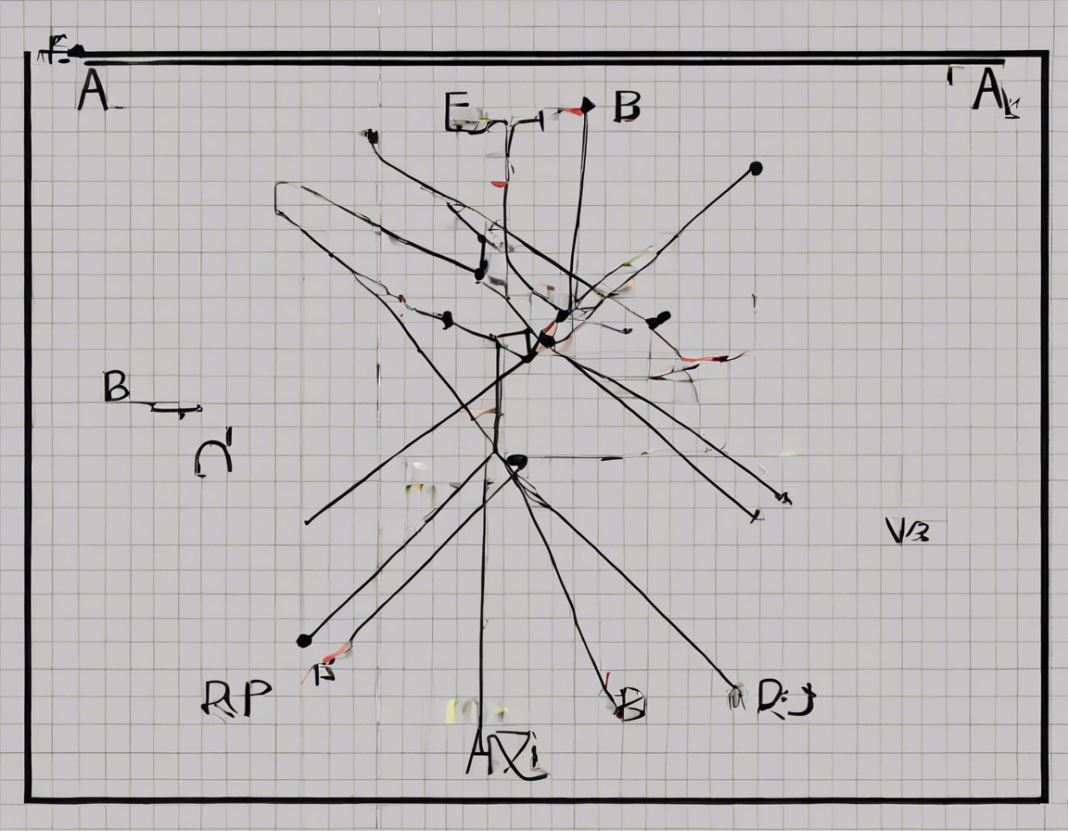When working with electrical circuits, understanding how to calculate the equivalent resistance between two points is crucial for proper circuit analysis and design. The equivalent resistance is the resistance that can replace a complex network of resistors while preserving the same current-voltage characteristics between two points in a circuit. This comprehensive guide will walk you through the steps to calculate the equivalent resistance between points A and B in a circuit, providing you with the necessary tools to simplify complex circuits and analyze their behavior effectively.
Understanding Resistance in Series and Parallel Circuits
Before diving into the calculation of equivalent resistance, it’s essential to grasp the concepts of series and parallel resistors in circuits. In a series circuit, resistors are connected sequentially, so the same current flows through each resistor. The total resistance in a series circuit is the sum of individual resistances:
Total Resistance (Series):
[
R_{\text{total}} = R_1 + R_2 + R_3 + \ldots
]
In a parallel circuit, resistors are connected across the same two points, providing multiple paths for current to flow. The reciprocal of the total resistance in a parallel circuit is equal to the sum of reciprocals of individual resistances:
Total Resistance (Parallel):
[
\frac{1}{R_{\text{total}}} = \frac{1}{R_1} + \frac{1}{R_2} + \frac{1}{R_3} + \ldots
]
Calculating Equivalent Resistance in Series
When two or more resistors are connected in series, the equivalent resistance is simply the sum of all the resistances. For a series connection of n resistors:
[
R_{\text{eq, series}} = R_1 + R_2 + R_3 + \ldots + R_n
]
Example:
Consider the following series circuit:
- (R_1 = 4 \ \Omega)
- (R_2 = 6 \ \Omega)
The equivalent resistance between points A and B in this series circuit is:
[
R_{\text{eq, series}} = 4 \ \Omega + 6 \ \Omega = 10 \ \Omega
]
Calculating Equivalent Resistance in Parallel
In a parallel connection of resistors, calculating the equivalent resistance involves determining the combined effect of multiple paths for current flow. For a parallel connection of n resistors, the formula for equivalent resistance is given by:
[
\frac{1}{R_{\text{eq, parallel}}} = \frac{1}{R_1} + \frac{1}{R_2} + \frac{1}{R_3} + \ldots + \frac{1}{R_n}
]
After obtaining the reciprocal of the total resistance, you can find the equivalent resistance by taking the reciprocal of the result:
[
R_{\text{eq, parallel}} = \frac{1}{\left( \frac{1}{R_1} + \frac{1}{R_2} + \frac{1}{R_3} + \ldots + \frac{1}{R_n} \right)}
]
Example:
Consider the following parallel circuit:
- (R_1 = 4 \ \Omega)
- (R_2 = 6 \ \Omega)
The equivalent resistance between points A and B in this parallel circuit is:
[
R_{\text{eq, parallel}} = \frac{1}{\left( \frac{1}{4} + \frac{1}{6} \right)} = \frac{1}{\left( \frac{3}{12} + \frac{2}{12} \right)} = \frac{1}{\frac{5}{12}} = \frac{12}{5} = 2.4 \ \Omega
]
Calculating Equivalent Resistance for Complex Circuits
For circuits that contain both series and parallel connections, determining the equivalent resistance requires a combination of the series and parallel formulas. The general approach involves simplifying the circuit step by step until a single equivalent resistance is obtained. Here are the steps to calculate the equivalent resistance for a complex circuit:
- Identify series and parallel combinations within the circuit.
- Repeatedly simplify these combinations until you arrive at a single equivalent resistance.
Example:
Consider the following complex circuit:
Applying the steps outlined above:
-
The 6 Ω and 4 Ω resistors are in series:
[
R_{\text{eq1}} = 6 \ \Omega + 4 \ \Omega = 10 \ \Omega
] -
The 10 Ω and 5 Ω resistors are in parallel:
[
R_{\text{eq2}} = \frac{1}{\left( \frac{1}{10} + \frac{1}{5} \right)} = \frac{1}{\left( \frac{3}{10} \right)} = \frac{10}{3} = 3.33 \ \Omega
] -
The combination of ( R_{\text{eq1}} ) and ( R_{\text{eq2}} ) is in series:
[
R_{\text{eq, total}} = 10 \ \Omega + 3.33 \ \Omega = 13.33 \ \Omega
]
Therefore, the equivalent resistance between points A and B in this complex circuit is 13.33 Ω.
Frequently Asked Questions (FAQs)
Q1: Why is calculating equivalent resistance important in circuit analysis?
A1: Calculating equivalent resistance helps simplify complex circuits, making them easier to analyze and design.
Q2: Can the equivalent resistance of a circuit be less than the smallest individual resistance in the circuit?
A2: No, the equivalent resistance of a circuit will always be greater than or equal to the largest individual resistance in the circuit.
Q3: How does the configuration of resistors (series or parallel) affect the equivalent resistance of a circuit?
A3: In series connections, resistances add up, leading to a higher equivalent resistance. In parallel connections, resistances decrease, resulting in a lower equivalent resistance.
Q4: What happens to the current flow in a circuit when the equivalent resistance is reduced?
A4: Reducing the equivalent resistance in a circuit will increase the total current flow, as per Ohm’s Law (I = V / R).
Q5: Is there a limit to the number of resistors that can be combined to calculate equivalent resistance?
A5: No, the principles of series and parallel resistors can be applied to any number of resistors in a circuit.
Q6: How does temperature affect the resistance of a circuit component?
A6: In general, the resistance of a conductor increases with an increase in temperature, following the temperature coefficient of the material.
Q7: Can capacitors and inductors be included in calculations of equivalent resistance?
A7: Capacitors and inductors are frequency-dependent elements and do not have a straightforward resistance value, so they are not directly included in equivalent resistance calculations.
Q8: Why is it essential to calculate equivalent resistance in electronic devices?
A8: Understanding equivalent resistance helps in designing efficient circuits, optimizing power consumption, and ensuring proper functioning of electronic devices.
Q9: Can superconductors be used to reduce the equivalent resistance in a circuit to zero?
A9: Superconductors have zero resistance, but achieving superconductivity typically requires extremely low temperatures, making practical applications limited.
Q10: How can computer simulation software aid in calculating equivalent resistance in complex circuits?
A10: Computer simulation software, such as SPICE programs, can automate the calculation of equivalent resistance in complex circuits, providing detailed insights into circuit behavior.
By mastering the techniques for calculating equivalent resistance in electrical circuits, you can streamline circuit analysis, troubleshoot issues effectively, and design robust electronic systems with optimized performance. Practice with various circuit configurations to enhance your skills and deepen your understanding of circuit theory and applications.

